The Burrow
There are a range of different kinds of cancer, where the cells in particular tissues of our body become diseased and divide, growing uncontrollably and killing the tissue. Although there are treatments available, some cancers can be fatal.
While anyone can be at risk of cancer (though some are almost exclusively gender specific, such as breast cancer, prostate cancer or cervical cancer), some cancers may have particular risk factors, such as ultraviolet exposure from the sun or smoking.
Across the world, it was estimated that there were 18.1 million cancer cases on Earth in 2020,1 or 231.43 per 100,000 people across the globe.
We wanted to see if there were particular areas across the plane that had higher incidence rates or risk factors that could make them a ‘cancer hotspot’. To do this, we’ve collated more than just cancer rates data. We also looked at specific cancers like lung cancer and melanoma, as well as smoking prevalence and UV radiation, both of which are risk factors for lung cancer and skin cancer respectively. Indexing these figures together gives us a way of looking at the data that weighs and compares different factors, combining them into one overall ranking for 153 different countries – the 35 worst of which are listed below.
It’s important to not understate the impact cancer can have on someone’s life. A cancer diagnosis can be a deeply emotional time for a person and their family, even if it is caught early on and is treatable. If the diagnosis is terminal, it’s important to understand how life insurance can support you and your loved ones.
Life insurance can provide a lump sum payout in the event an insured person is left unable to work, is diagnosed with a terminal illness or passes away, provided it was purchased before the diagnosis (you are not allowed to make a claim if you purchase life insurance after receiving a terminal illness diagnosis). Life insurance is designed to help you plan ahead for the worst. It can be very important as it can provide peace of mind that their family will have financial support to pay for a variety of expenses like mortgages and existing debts, bills and other costs to maintain a lifestyle as the insured person’s family adapts to a new life.
When we indexed all these factors together, France was ranked at the top of our cancer hotspots index. This is because France had very high scores across multiple factors. The European nation had the fourth-highest rate of breast cancer (99.1 per 100,000), the fifth-highest rate of prostate cancer (99 per 100,000), the eighth-highest incidence rate of lung cancer (34.9 per 100,000), and the ninth-highest incidence rate from all cancers (341.9 per 100,000). It also was 15th for smoking prevalence (33.4% of the population) – all of this out of 153 countries.
Europe itself is a cancer hotspot, with nine of the 10 highest ranking nations being European. Hungary was ranked second overall, but also had the highest rate of lung cancer out of all nations, with 50.1 per 100,000 people having the diagnosis. Hungary was also right behind France in cancer rate per capita for all cancers with a rate of 338.2 per 100,000 people. The third-highest ranking country was Croatia, which had the seventh-highest cancer mortality rate (133.3 per 100,000 people) and eighth-largest smoking population.
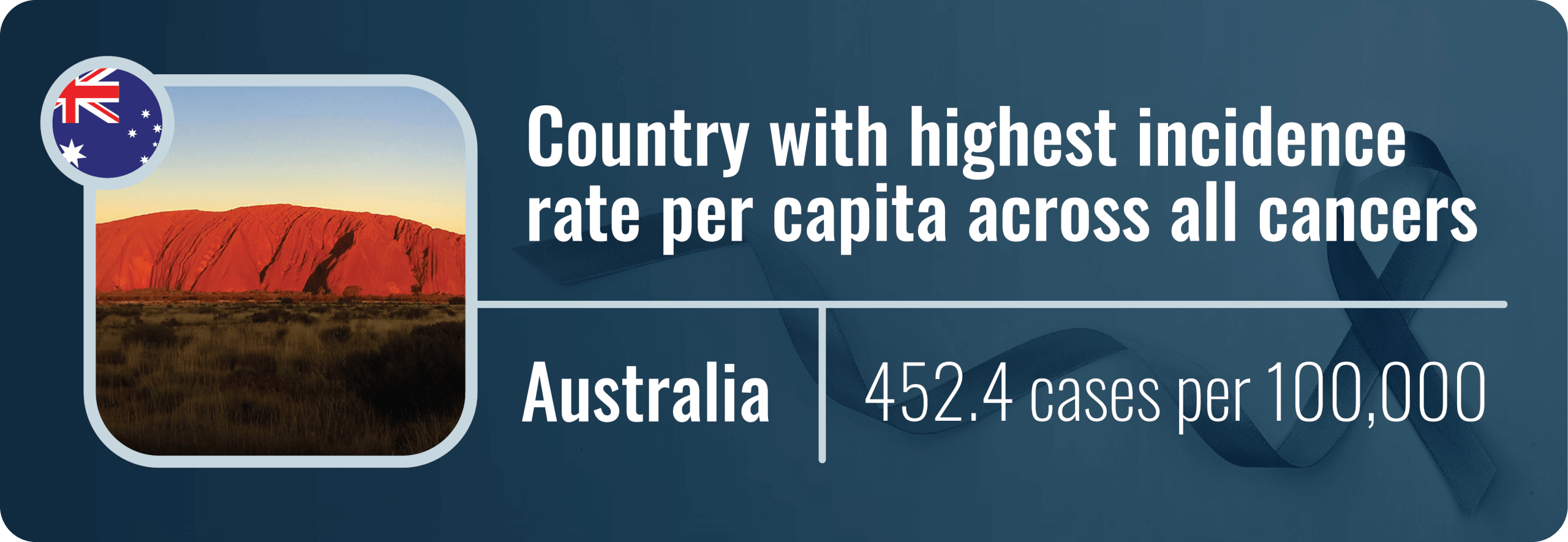
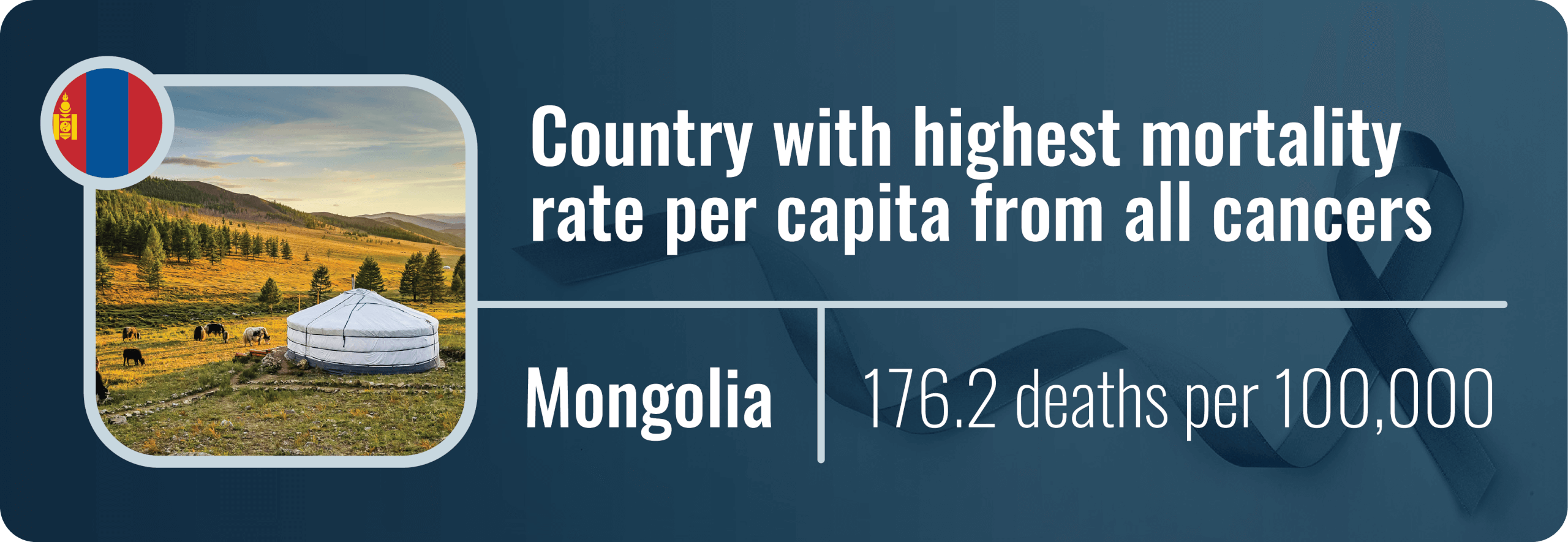
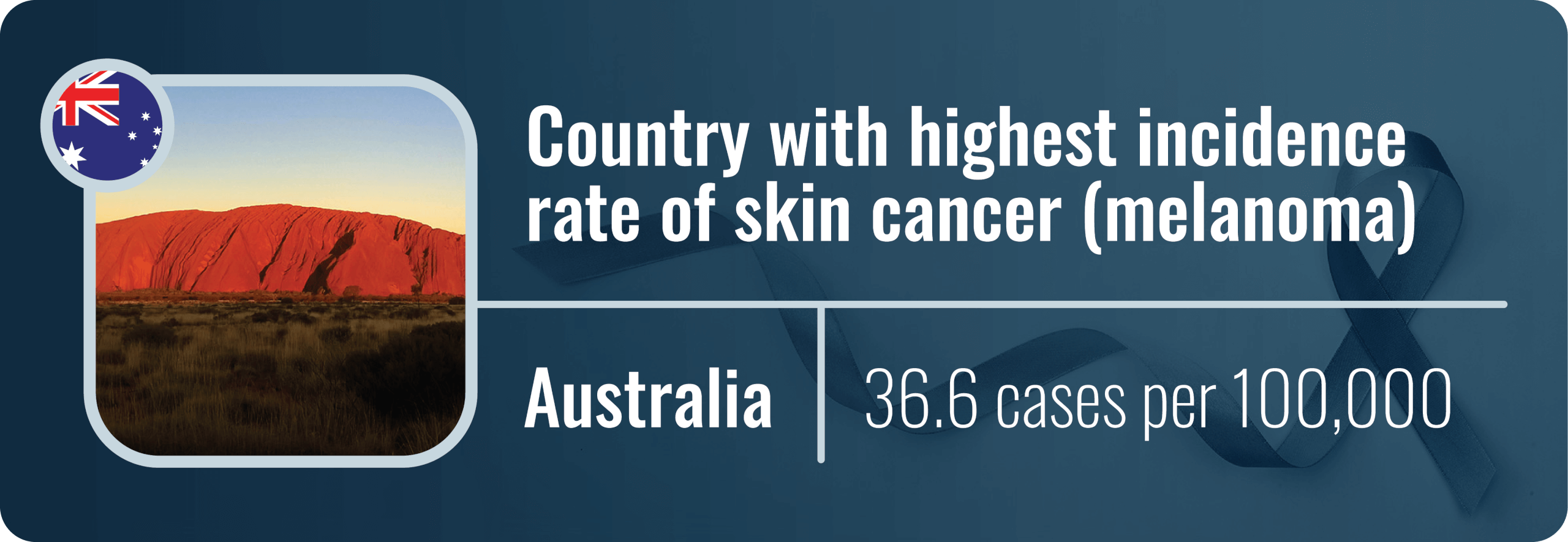
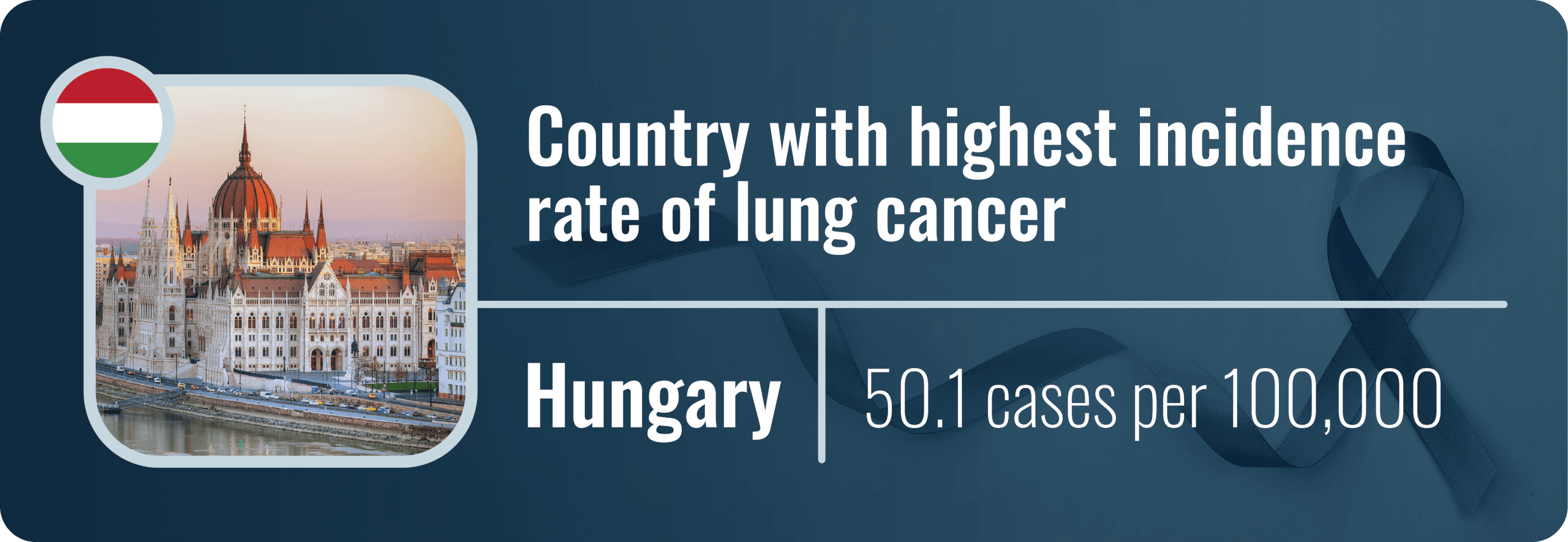
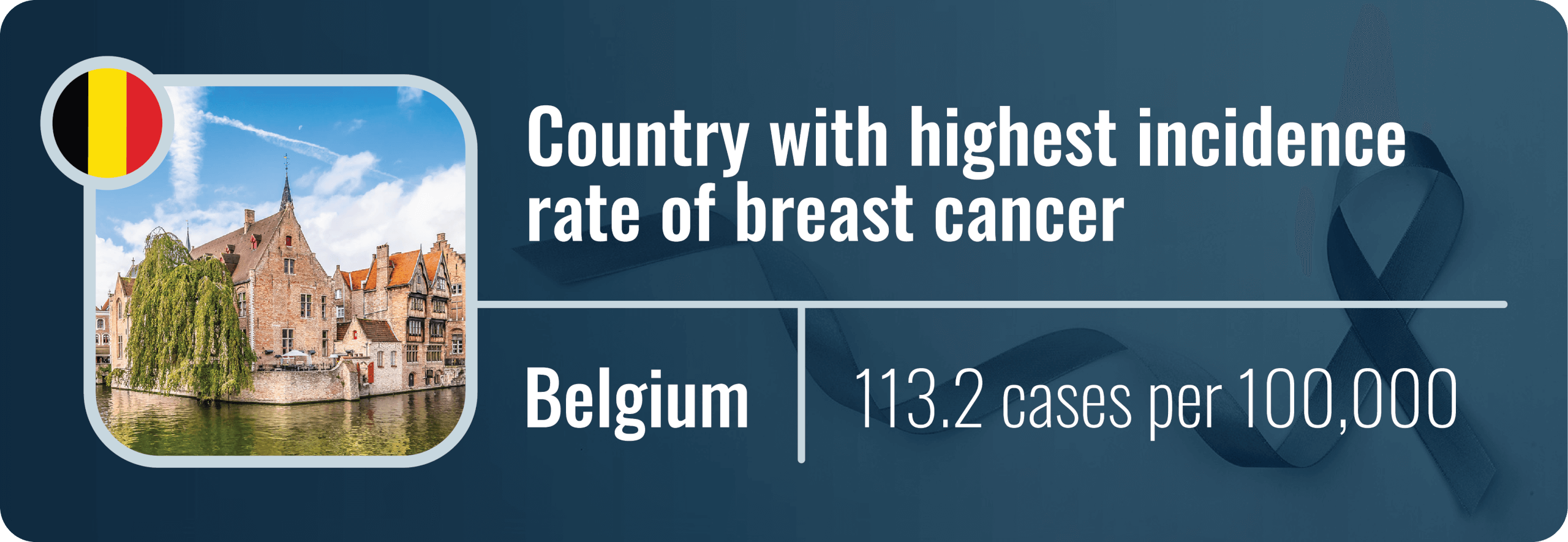
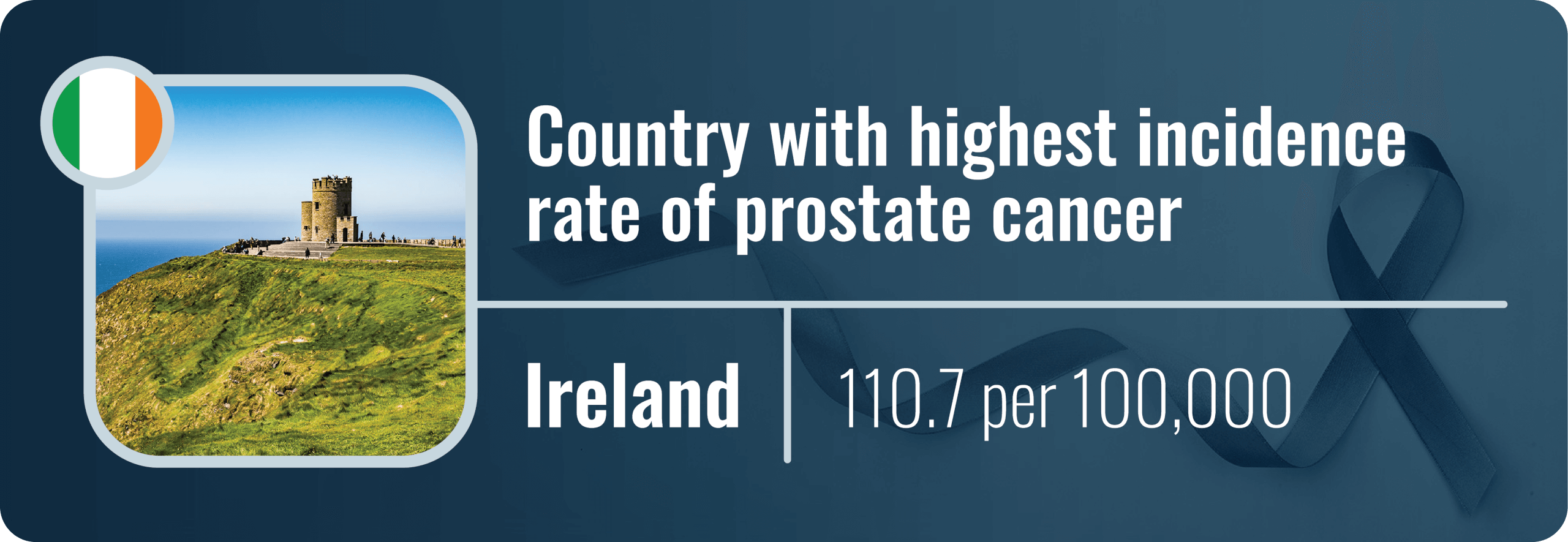
As experts in life insurance within Australia, we were particularly curious to see how our own nation performed. Out of all 153 countries, Australia was ranked 27th, placing the country in the top sixth of cancer hotspots across the globe. Australia however had the highest rate of all cancers in the world at 452.4 per 100,000 people, as well as the highest rate of melanoma in the world at 36.6 per 100,000. Furthermore, the nation had the sixth-highest rate of breast cancer at 96 per 100,000.
However, Australia avoids being ranked higher up on the list because it ranked very low in the other metrics we looked at. For example, despite having the highest rate of cancer per capita, Australia was only ranked 100th for average UV radiation exposure per day, 101st for cancer mortality (from all cancers) and 102nd for smoking prevalence. These low scores effectively drag down Australia’s overall ranking, which would otherwise be much higher.
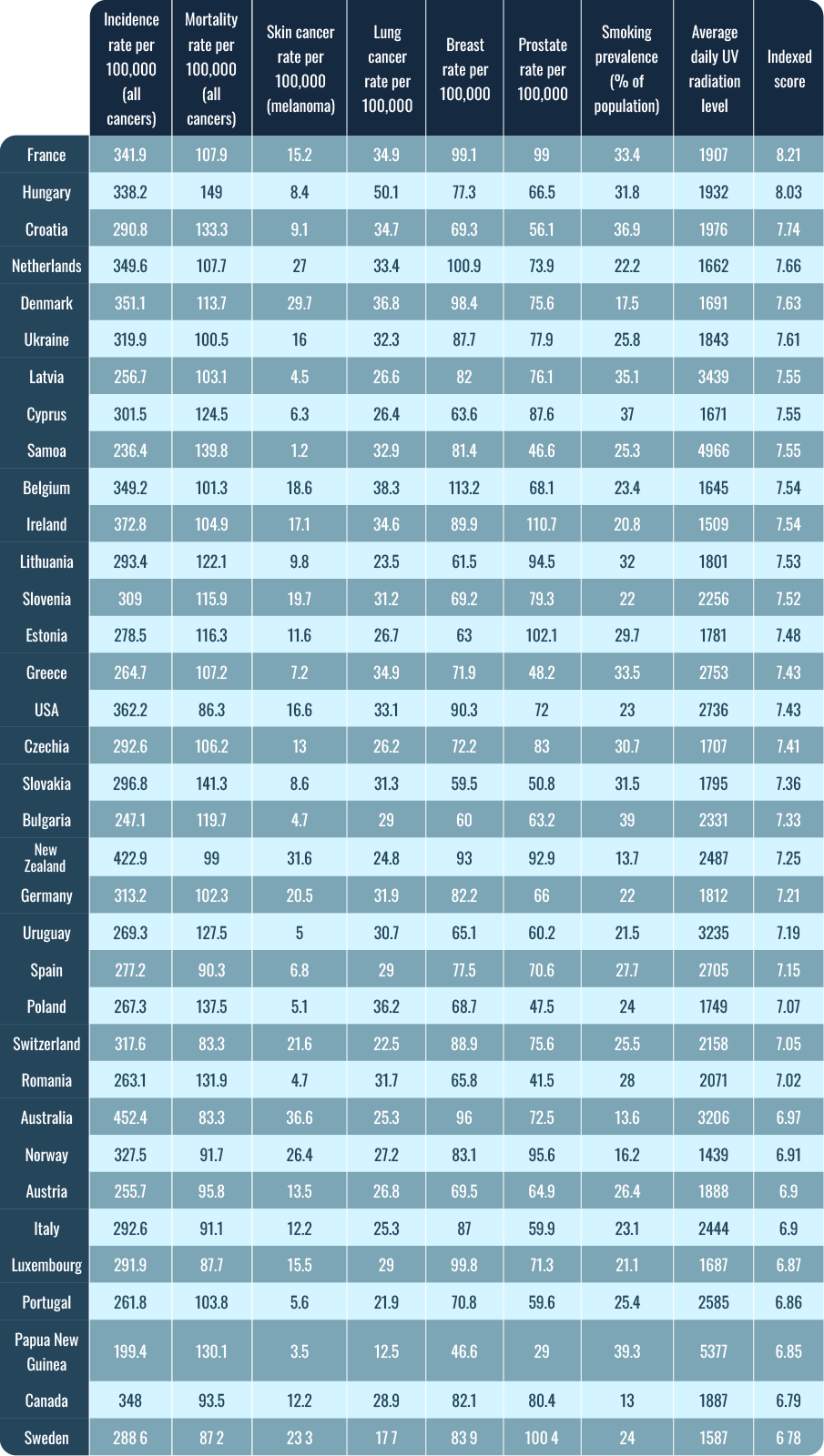
View the full table here.
Compare the Market gathered data from the World Health Organization (WHO) for eight different metrics. These metrics were indexed so that each nation was given a score between 1 and 10 for each data point, with 10 representing the worst score and 1 representing the best score for each metric. These scores were then averaged together, creating an indexed ranking between 1 and 10 for each of the 153 countries.
The factors we looked at were:
1 Worldwide cancer data. World Cancer Research Fund International. 2022.